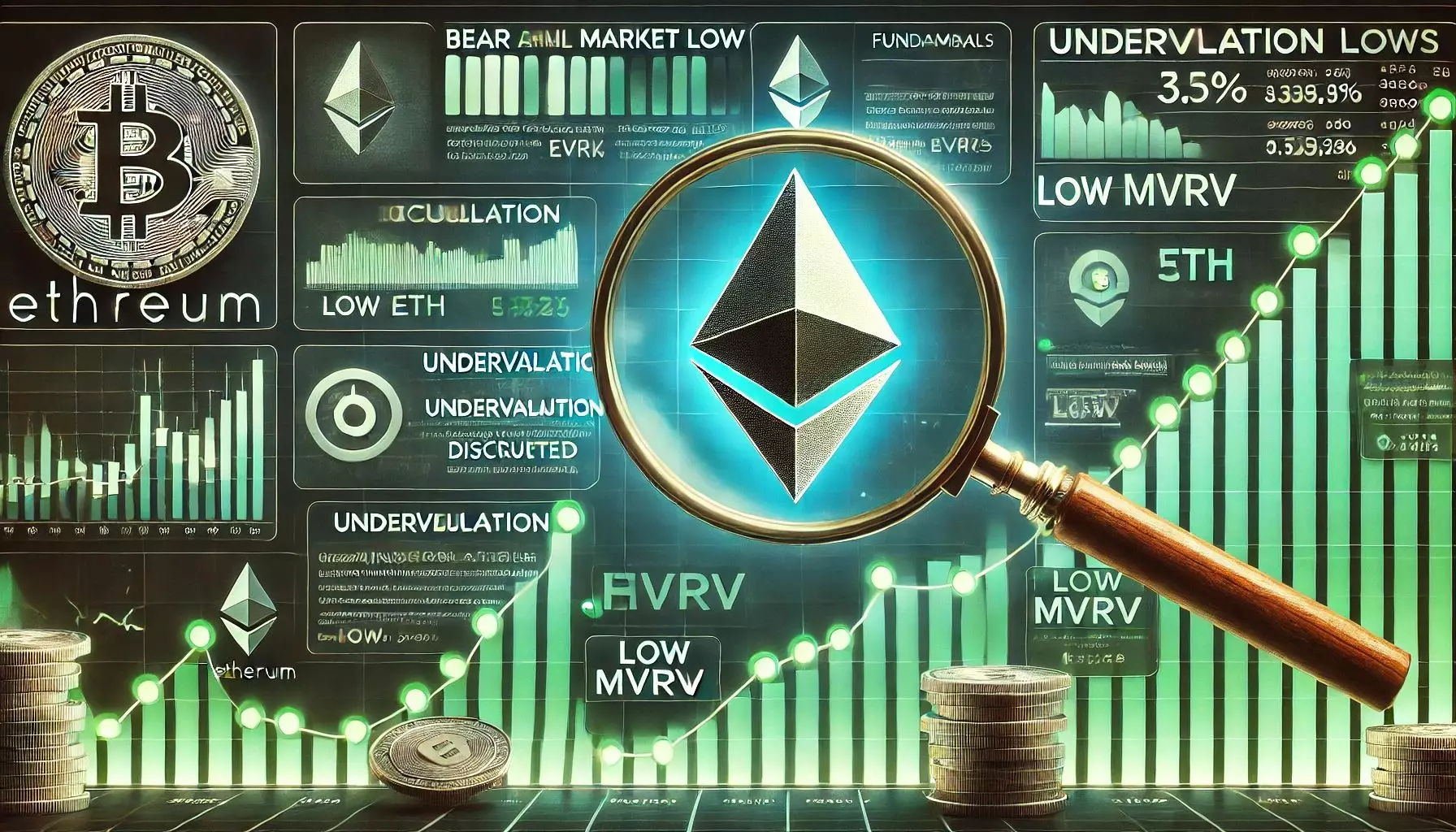At a glance, Ethereum’s current trading status may seem disheartening, especially as it languishes below critical resistance levels after a staggering drop of over 21%. Many investors may grapple with uncertainty as the asset struggles around the $1,590 mark, after slipping through the psychological threshold of $2,000. This scenario, where fear reigns among short-term investors, raises valid concerns. However, beneath the surface turbulence, Ethereum’s fundamentals paint a distinctly more optimistic picture, potentially setting the stage for a significant turnaround.
Moreover, a noticeable trend appears in the crypto space, where the choppy waters of market performance lead to a general shift in sentiment. While short-term volatility can undoubtedly narrow focus on price dips and trading strategies, it often overshadows the broader developments that reveal the resilience and potential of a platform like Ethereum. The question beckons: are we witnessing a mere fluctuation in sentiment, or is there something deeper at play, perhaps a calculated effort to shake out less steadfast investors?
The Robustness of Ethereum’s Ecosystem
Ethereum’s importance is perhaps best illustrated by its integral role in the decentralized finance (DeFi) landscape. It’s a backbone that supports over 95% of all stablecoin transactions and boasts the highest Total Value Locked (TVL) across various DeFi and Real World Asset (RWA) protocols. The backbone of a thriving ecosystem, Ethereum’s potential reaches far beyond its current trading struggles; it symbolizes a future where blockchain technology can cease being seen solely as speculative assets. Contrary to what the price charts may suggest, Ethereum remains an indispensable tool for developers and businesses seeking to leverage decentralized applications.
Moreover, while market dynamics fluctuate, Ethereum continues to gain legitimacy within institutional circles, being the only altcoin to receive approval for a spot Exchange-Traded Fund (ETF) in the United States. Such milestones reflect a growing acceptance that could fuel demand for ETH in the long run. Analysts like Ted Pillows echo this sentiment, encouraging investors to perceive the downturn as a unique accumulation opportunity rather than a signal of inherent weakness.
Macroeconomic Influences and Their Impact
As Ethereum grapples with mounting macroeconomic pressures, particularly amid rising global tensions between major economies, the volatility is hardly surprising. The U.S. trade war with China and the associated economic strain on various sectors instigate a retreat from high-risk assets like cryptocurrencies. This backdrop can skew market responses, impacting how investors interpret Ethereum’s position.
Nevertheless, such market reactions often prompt a cycle of panic, wherein short-term traders may overlook the underlying fundamentals. The persistent geopolitical strife serves as a reminder that cryptocurrency landscapes are interconnected with global economics, but it doesn’t erase Ethereum’s fundamentals. There’s a glaring difference between a temporary market pullback and a collapse of value; only a return to confidence can paint a clearer picture.
The Path Ahead: Upgrades and Opportunities
Amidst the current turmoil, it is vital to remember the promising upgrades and innovations on the horizon for Ethereum. With several protocol enhancements aimed at improving scalability and reducing transaction costs, Ethereum displays a momentum for progress that is paramount for sustained growth.
Importantly, if the bulls can reclaim key resistance around the $1,800 mark, this might spell a significant recovery phase. The trading range between $1,500 and $1,800 represents a battleground of sorts, guiding how traders react in the short term. Should Ethereum break beyond $1,800, nostalgia for the $2,000 mark might not seem so far-fetched after all.
However, there are valid apprehensions as the asset hovers around critical support levels. Should it fall below $1,550, further leg-downs could lead to pricing beneath the $1,500 threshold. Thus, while the risk of downside exists, it is essential to remain aware of Ethereum’s pivotal role and utilities in the grander scheme of crypto’s evolution.
Strategic Accumulation vs. Reactive Trading
For long-term holders, the current price levels could represent an opportune moment for strategic accumulation. The perspective is straightforward: viewing Ethereum’s seemingly adverse situation as a chance to cement one’s position in a leading blockchain technology that appears poised for further development.
Conversely, reactive traders seeking immediate profits may struggle to navigate the isolated fluctuations, setting themselves up for potential losses. The precarious balance of perception and reality in the crypto market forces participants to wrestle with their strategies. Ultimately, this spells a fascinating paradox: the hunting ground for avid believers in Ethereum’s future stands alongside the perilous terrain that tempts those swayed by fear.
In this landscape filled with speculation, Ethereum’s overall narrative continues to inscribe itself with potential—one that shouldn’t be glossed over, even when present volatility might tempt one to look elsewhere. It’s crucial to digest the full spectrum of this digital asset’s strengths, weaknesses, and the relentless march towards a blockchain-centric future.


Leave a Reply